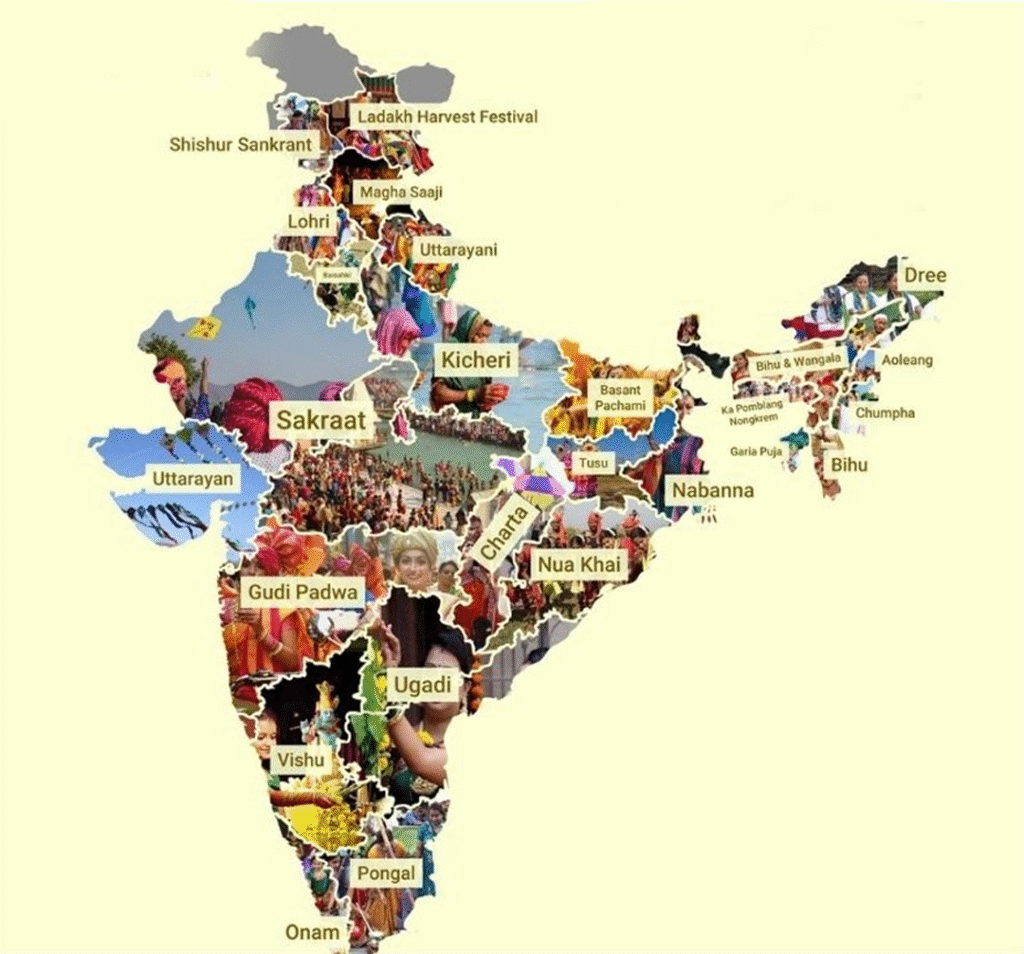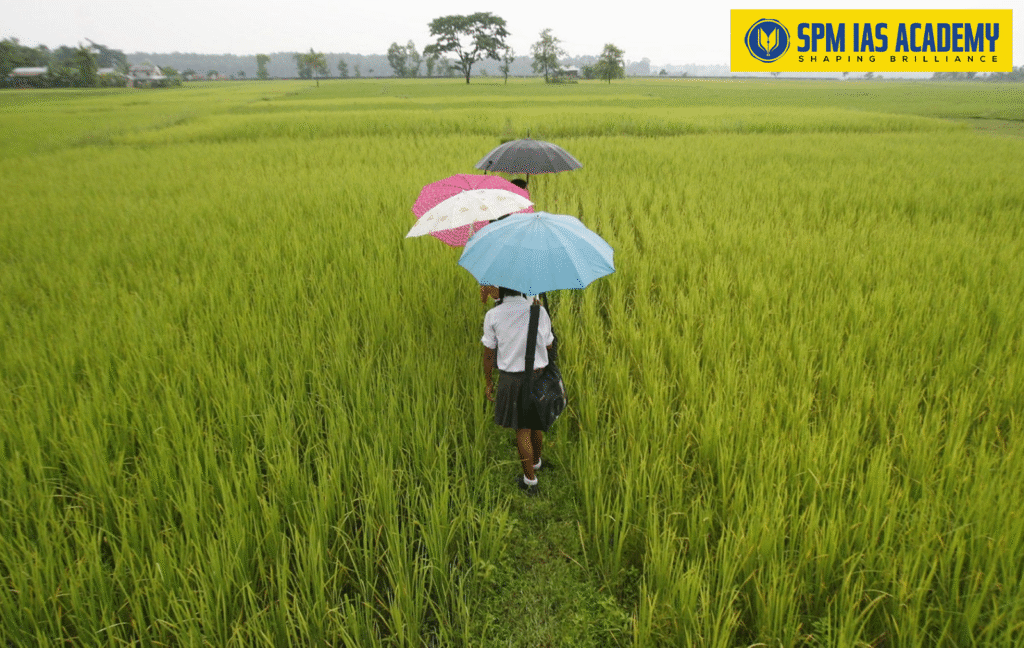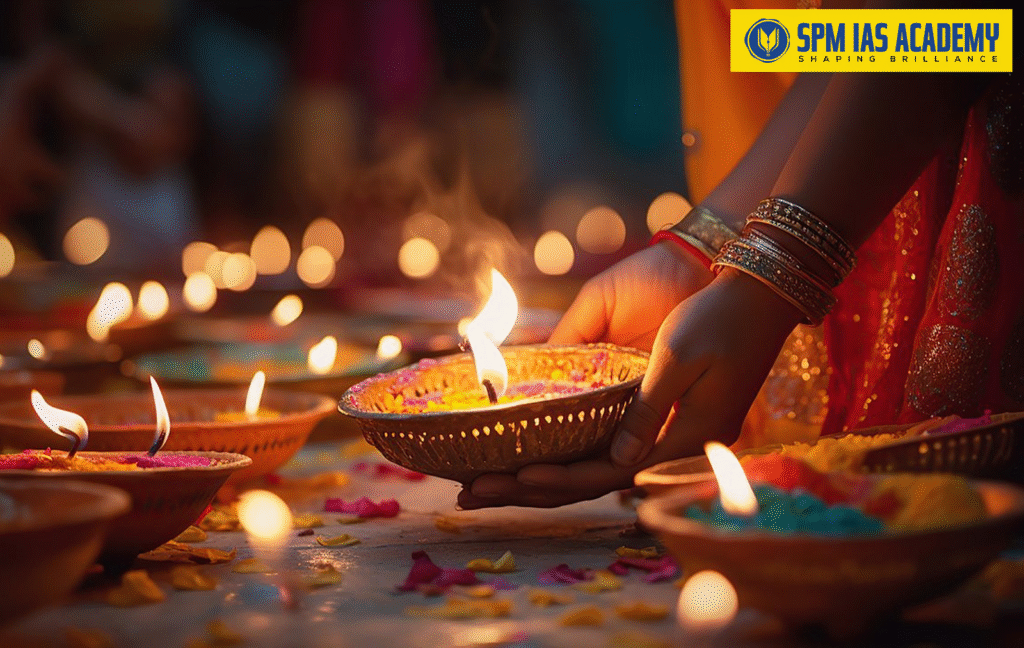India experiences a fascinating cycle of seasons, shaped by geography, wind patterns, and climate systems. When we study the season in India, we unlock how life, agriculture, festivals, and daily routines change across the year. Below, I will explain the main seasons, their features, and how regional variety enriches this cycle.

Four Main Seasons of India
According to the Indian Meteorological Department, India broadly experiences four main climatic seasons:
- First , is the Summer (Pre-Monsoon / Grishma) – March to June
- Second , the Monsoon (Rainy / Varsha) – June to September
- Third , the Retreating Monsoon / Autumn (Sharad / Post-Monsoon) – October to November
- Fourth , which is the Winter (Shishir / Hemant) – December to February
Now , let’s look at each in more detail.
Summer (March to June)

During summer, temperatures rise steadily across the country, often crossing 40°C in the northern plains and central regions. The Summer Season in India is marked by clear skies, dry winds, and scorching afternoons.
Features of Summer Season:
- Temperature: Ranges between 25°C and 45°C.
- Regions Most Affected: Rajasthan, Gujarat, Madhya Pradesh, and Uttar Pradesh experience extreme heat.
- Weather Pattern: Hot, dry winds locally known as Loo blow across northern India.
- Impact: Water scarcity becomes common, and agricultural activity slows down in many areas.
- Positive Aspect: The melting Himalayan snow replenishes river systems and prepares the soil for the upcoming monsoon.
Popular Festivals:
- Baisakhi (Punjab) marks the harvest of rabi crops.
- Bihu in Assam , marking the Assamese new year.
- Rath Yatra and Ganga Dussehra are celebrated in parts of northern and eastern India.
Monsoon Season in India (June to September)

The Monsoon Season in India defines the rhythm of life. The southwest monsoon winds bring rainfall to almost every part of the country, except parts of Rajasthan and Ladakh.
Features of Monsoon Season:
- Temperature: 20°C to 35°C with high humidity.
- Regions Most Affected: Western Ghats, Northeast India, West Bengal, Odisha, and central India receive the heaviest rainfall.
- Rainfall Pattern: Kerala is the first to receive rain in early June, and by mid-July, the entire subcontinent is covered.
- Impact: Agriculture flourishes, rivers and reservoirs fill up, and rural India comes alive with plantation and sowing.
- Challenges: Flooding, waterlogging, and landslides are common in many states.
Cultural Significance:
The monsoon inspires countless poems, songs, and festivals such as Onam in Kerala and Teej in North India. It symbolizes fertility, renewal, and prosperity.
Autumn or Retreating Monsoon in India (October to November)

The Autumn Season in India, also known as the Retreating Monsoon, marks the withdrawal of monsoon winds. The skies clear, humidity drops, and temperatures begin to cool.
Features of Autumn Season:
- Temperature: Around 20°C to 30°C, pleasant and moderate.
- Regions Most Affected: Tamil Nadu, Andhra Pradesh, and parts of the east coast continue receiving rainfall due to the northeast monsoon.
- Weather Pattern: Clear skies, shorter days, longer nights, and refreshing breezes.
- Impact: Perfect season for outdoor activities and tourism as the climate becomes comfortable.
Cultural Significance:
This season coincides with India’s grandest festivals ,Durga Puja, Diwali, Kati Bihu of Assam and Navratri. Farmers celebrate good harvests, and the festive atmosphere fills cities and villages alike.
Winter Season in India (December to February)

The Winter Season in India brings a sharp drop in temperatures across most parts of the country. The northern plains experience fog, dew, and cold waves, while the southern regions enjoy mild, pleasant weather.
Features of Winter Season:
- Temperature: 10°C to 25°C in most parts; can drop below freezing in Himalayan regions.
- Regions Most Affected: Northern states like Punjab, Haryana, and Himachal Pradesh witness extreme cold and snowfall.
- Weather Pattern: Cool, dry winds from the north; western disturbances occasionally bring rain.
- Impact: Ideal conditions for rabi crop sowing and tourism in hill stations.
Cultural Significance:

Major celebrations such as Lohri, Magh Bihu , Makar Sankranti, and Pongal are held to mark the harvest and the changing season. Winter is also a season of fairs, folk dances, and traditional cuisines across India.
Regional Variation of Seasons in India
India’s vast size means that each region experiences the Season in India differently:
- Northern India: Sharp contrast between summer and winter with snowfall in mountains.
- Western India: Arid conditions, extreme heat, and short monsoon spells.
- Southern India: Tropical climate with less temperature variation but heavy rainfall.
- Northeastern India: One of the wettest regions in the world, especially during the monsoon.
This variation shows how geography, altitude, and proximity to water bodies shape the Season in India uniquely across the country.
Importance of Season in India
The Season in India deeply influences the country’s economy, culture, and daily life.
- Agriculture: The timing of crop cycles depends entirely on monsoon rainfall.
- Festivals: Seasonal transitions determine religious and cultural celebrations.
- Tourism: Travelers plan trips based on pleasant climates and scenic landscapes.
- Health: Each season demands different diets, clothing, and care routines.
By understanding the Season in India, one learns how closely Indian life is tied to nature’s rhythm.
Conclusion
The Season in India is more than a climatic pattern , it’s a living cycle that shapes the nation’s soul. From scorching summers to refreshing monsoons and chilly winters, each season carries its beauty and challenges. This continuous interplay of nature and life defines India’s diversity, resilience, and cultural richness.
Article List
Latest Articles
| Article Title | Read More |
|---|---|
| Top 10 UNESCO World Heritage Sites in India | Read Article |
| Special Agencies of United Nations | Read Article |
| Tiger Reserves in India | Read Article |
| Neighboring Countries of India | Read Article |
| Middle East Countries | Read Article |
| Top 10 Highest Mountain Peaks in India | Read Article |
| 10 Most Powerful Countries in the World by Military Strength | Read Article |
FAQs on Season in India
There are four main seasons in India i.e , summer, monsoon, autumn, and winter.
Summer, from March to June, is the hottest season in most parts of India.
It supports agriculture, replenishes water sources, and influences the economy and culture.
Winter occurs when the sun shifts southward, bringing cooler winds and lower temperatures.
The northeastern region, especially Meghalaya’s Mawsynram and Cherrapunji, receives the most rainfall.












